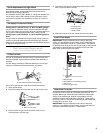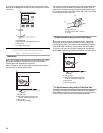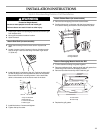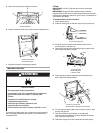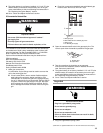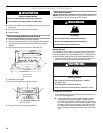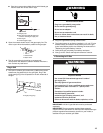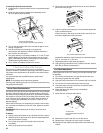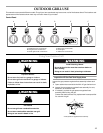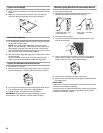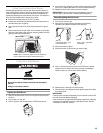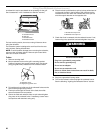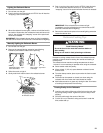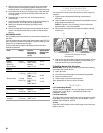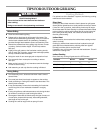Special offers from our partners!

Find Replacement BBQ Parts for 20,308 Models. Repair your BBQ today.
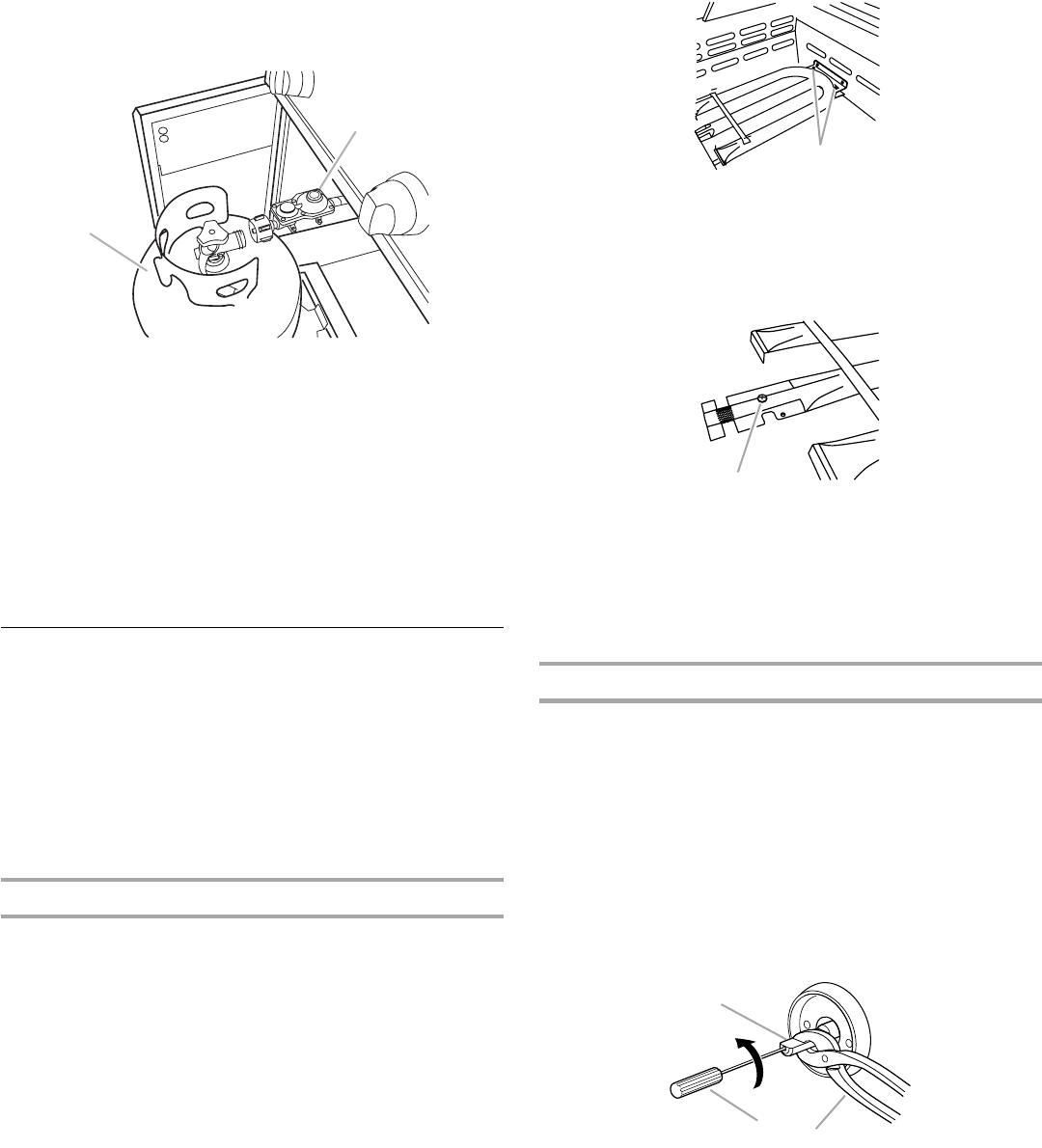
16
To Install the 20 lb LP Gas Fuel Tank:
1. Install the 20 lb LP gas fuel tank into the compartment below
the grill.
2. Screw the gas pressure regulator/hose assembly to the
20 lb LP gas fuel tank as shown.
3. Turn on the gas supply. Wait a few minutes for gas to move
through the gas line.
4. Test all connections by brushing on an approved
noncorrosive leak-detection solution. Bubbles will show a
leak. Correct any leak found.
5. The igniter battery is not factory installed. A 1.5 volt “D” size
alkaline battery is located in the accessory box on the grill
grate. Install battery at this time following the instructions in
“Replacing the Igniter Battery” section.
6. Go to “Check and Adjust the Burners” section.
Check and Adjust the Burners
The burners are tested and factory-set for most efficient
operation. However, variations in gas supply and other conditions
may make minor adjustments to air shutter or low flame setting
necessary.
It is recommended that a qualified person make burner
adjustments.
NOTE: The rotisserie burner cannot be adjusted.
Checking and adjusting the grill burner flames requires removing
the grate and sear plates.
Burner Flame Characteristics
The flames of the grill burners and side burners (on some models)
should be blue and stable with no excessive noise or lifting (LP
gas flames will have a slightly yellow tip). A yellow flame indicates
not enough air. If flame is noisy or lifts away from the burner, there
is too much air. Some yellow tips on flames when the burner is
set to HI setting are acceptable as long as no carbon or soot
deposits appear.
Check that burners are not blocked by dirt, debris, insect nests,
etc. and clean as necessary. If they are clean, adjust air shutters
as needed.
IMPORTANT: Before adjusting air shutters, let burners cool
completely.
To Adjust:
1. Light grill using information in the “Outdoor Grill Use” section.
2. Observe flame to determine which burners need adjustment
and how the flame is acting.
3. Turn off the valve and wait until grill and burners cool
completely.
4. Remove grill grates and sear plates.
5. Remove the 2 screws that hold the burner in place. Remove
gas burner from the grill.
6. If flame is yellow (not enough air), turn air shutter adjustment
screw counterclockwise.
If flame is noisy or lifts away from burner (too much air), turn
air shutter adjustment screw clockwise.
Adjustment should be made clockwise or counterclockwise
from ¹⁄₈" (3.2 mm) to ¹⁄₄" (6.4 mm).
7. Replace gas burner, sear plates and grates.
8. Light grill using information in the “Outdoor Grill Use” section.
See “Burner Flame Characteristics.”
Low Flame Adjustment
If flame goes out on the “LO” setting, the low flame setting must
be adjusted.
1. Turn off the valve and wait until grill and burners are cool.
2. Remove grill grates and sear plates.
3. Light grill using information in the “Outdoor Grill Use” section.
4. Turn burner to its lowest setting and remove knob.
5. Hold valve stem with pliers and insert a small flat-blade
screwdriver into the shaft.
6. Watch the flame and slowly turn the screwdriver
counterclockwise.
7. Adjust flame to minimum stable flame.
8. Replace the control knob and turn off the burner.
9. Repeat steps 3 through 8 for each burner if needed.
10. Replace the sear plates and grates after the burners have
cooled.
A. 20 lb LP gas fuel tank
B. Gas pressure regulator/hose assembly
A
B
A.2 screws
A. Air shutter adjustment screw
A. Valve stem
B. Small flat-blade screwdriver
C. Pliers
A
A
A
B
C




